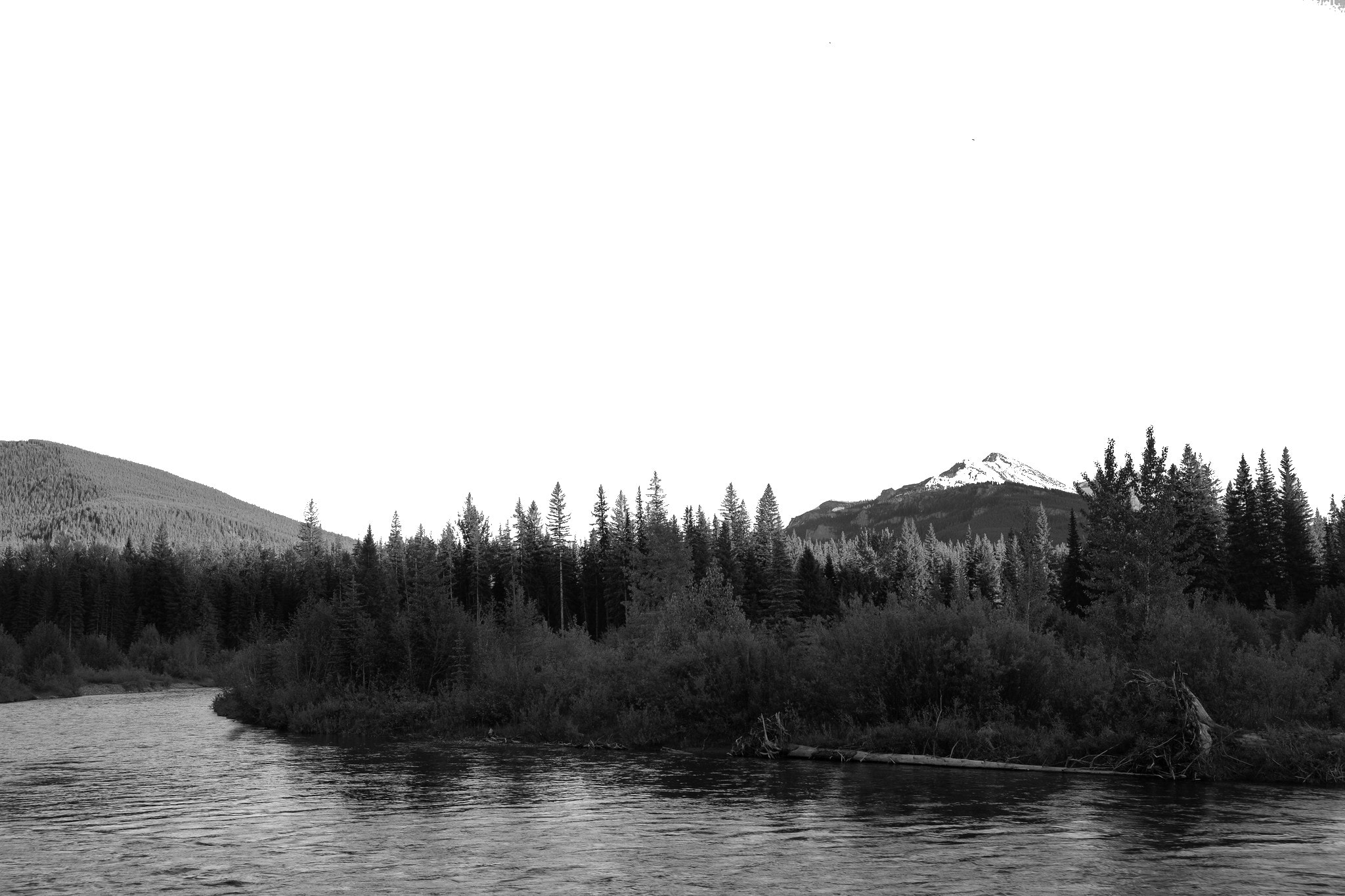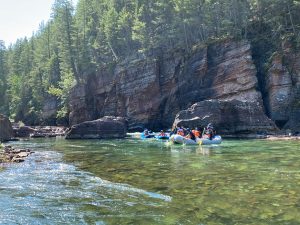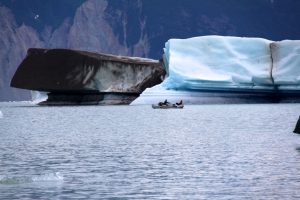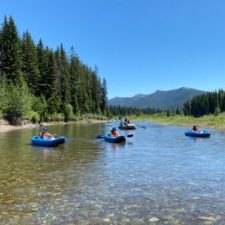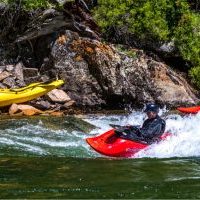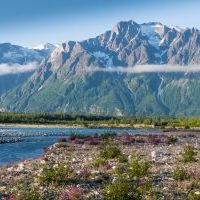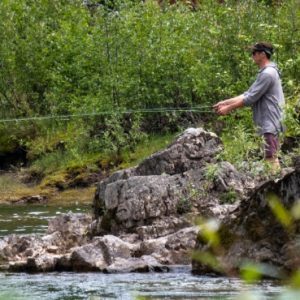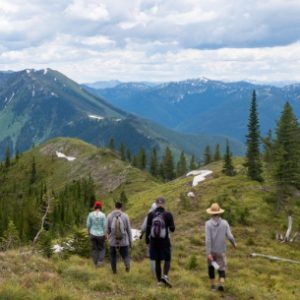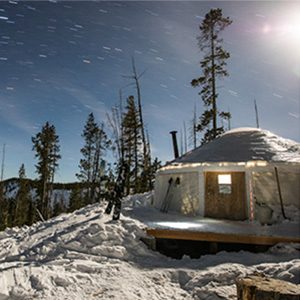Overview
Let our professional fishing guides show you one of the most remote, trout-filled rivers in Montana on a fishing specific South Fork Flathead trip in the heart of Montana’s backcountry. The South Fork is one of the few river systems that allow for targeting bull trout. We start the trip with a two-day ride (or hike) through spectacular scenery through the Bob Marshall wilderness to access the starting point of the float, then spend time fly-fishing some of the most pristine water in Montana. Come see for yourself why the South Fork of the Flathead is a legendary wilderness fishing trip!
Trip Highlights
- 8 days, 43 river miles, 22-29 trail miles
- Hike/ trail ride through Bob Marshall Wilderness
- World-class fly-fishing; opportunities for spey fishing
- Targeted bull trout fishing
- Fishing-specific boats, frames, Montana fishing guides
- Remote scenery; limited traffic
- Hiking
- Horseback riding
This trip includes a two-day, 25-mile horseback ride (or hike) to access the remote South Fork Flathead. With no roads or airstrips, everything is horse-packed to the put in–it’s the real Montana experience! The scenery on the ride portion of the trip is spectacular. We ride over a mountain pass and through alpine meadows flourishing with wildflowers, before dropping into the headwaters of the South Fork. This remote valley deep in the Bob Marshall Wilderness is home to extraordinary wildlife, including elk, moose, wolf, eagles, mountain goats, grizzly and black bear.
The South Fork Flathead is one of the most beautiful and productive trout streams in North America. For the first few days of the trip, the water meanders lazily through a sweeping glacial valley and grand Ponderosa Pines. We dedicate our river time on this trip to fishing for one of the purest strains of Westslope Cutthroat trout in the world. During July, the South Fork is one of the only rivers in America where you can target bull trout. Catching a South Fork bull trout will be a lasting memory for any fisherman. Big and plenty, these native fish average 12-20 inches, and have gotten up to 40 inches. Each fishing boat will carry one or two fishermen with a professional fishing guide and a fishing-specific standing frame. Our guides are knowledgeable with flies, the waters of the South Fork, and all aspects of fly-fishing, and they are ready to advise if you need assistance. On the other hand, if you are an experienced fisherman, they will put you in the right spot and let you do your thing!
On this trip, we offer a deluxe camping option where a gear boat goes ahead of the other fishing boats to start setting up camp. As the fishing boats arrive, some of the crew will start getting appetizers ready and finish camp setup. Join us for eight wonderful days of luxury camping and dry fly-fishing in the incredible Bob Marshall Wilderness of Montana!
The Stats
| Departure Month | July |
| State / Region | |
| Adventure Level | Moderate |
| Price Range | $3000+ |
| Activities | Fishing, Hiking, Backpacking, Horseback Riding, Rafting, Wildlife |
Logistics
See you here:
The South Fork of the Flathead trip begins and ends in Kalispell, Montana (FCA).
Before the trip:
Travel to Kalispell, Montana (FCA) no later than 3 pm one day prior to your trip’s launch date. Delta, Alaska/Horizon, United, Allegiant, Frontier and US Airways offer flights into Glacier International Airport (GPI). A variety of car rentals are available should you decide to visit Glacier National Park before or after your trip. Please contact our office ahead of time to arrange logistics if you need to be picked up. If driving, you will be able to leave your car at the Kalispell airport.
We will provide transportation from Kalispell to the Rich Ranch the day before your trip is scheduled to begin. It is about a two hour drive to the Rich Ranch.
Your trip leader will put on an orientation around 6 pm at the Rich Ranch. We will need to have our gear ready either that evening or very early the next morning (especially if you’ve chosen to use horse support). We will make lunch for the trail, and after a short drive to the trailhead in the morning we will be on our way.
Lodging Before:
You will need to arrange lodging and dinner reservations for the night before your launch date at the Rich Ranch. You will be responsible for the cost of lodging and dinner here that is not included in the WRO trip cost.
Rich Ranch
Phone: (406) 677-2317
Email: [email protected]
Website: richranch.com
After the trip:
We provide transportation back to Kalispell from either the Meadow Creek trailhead after a three mile hike if not running the gorge (1 hour hike, 3 hour drive plus mule packing gear unload), or from the Spotted Bear Bridge takeout (3 hour drive) if rafting the gorge. We try to arrive back to Kalispell late afternoon on the last day of your trip if running the gorge, but will typically arrive closer to early evening if hiking out, as you are dealing with additional logistic factors.
If staying in Kalispell the night your trip takes off, we recommend making your reservations at the Red Lion Hotel (1-800-547-8010) or Travelodge (1-406-755-6123) in Kalispell. The hotel will provide shuttle service from the airport.
Sample Itinerary
Day Before: Travel to Kalispell, Montana (FCA) no later than 3 pm. Please contact our office ahead of time to arrange logistics if you need to be picked up. If driving, you will be able to leave your car at the Red Lion Hotel in Kalispell. After meeting your trip leader and the other guests, we will drive as a group from Kalispell to the Rich Ranch, which is about a two hour drive. Your trip leader will put on an orientation at 6 pm at the Rich Ranch, where trip details, last minute questions, and dry bag demonstrations will be given. We will need to have our gear ready that evening or very early the next morning (especially if you’ve chosen to use horse support). We often have dinner together, and you will spend this first night at the Rich Ranch lodging.
Day 1: We will make packed lunches at the Rich Ranch. From the Rich Ranch, we’ll get an early start for our drive to the Pyramid or Holland Lake trailhead. Depending on the route in, over the first two days we will cover about 20-25 miles either by foot or by livestock. We will have lunch on the trail and camp on the trail the first night after about 16 miles.
Day 2: Finish off the hike or horseback ride to the river put in where we will meet the rafts and the guides. A general river orientation and safety talk will be given, and PFDs (lifejackets) will be custom-fitted before getting on the water and starting the adventure! Usually we would reach the river mid afternoon the second day camping at the river the second night.
Day 3-5: The third morning we would head downstream on the river, stopping for some fishing along the way and camping at some beautiful riverside campsites.
Day 4-7: As we continue on, we’ll be rafting the calm and beautiful upper South Fork, floating around lazy corners and casting along undercut banks. There will be plenty of opportunities to try out the superb fishing, and we’ll take some time to wander through the beautiful Ponderosa Parks, for opportunities to possibly see wildlife and soak in the scenery. We will camp the final night above the Meadow Creek Gorge to prepare for our short hike out the next morning.
Day 8: We will arrive at Mid-Creek takeout and there will be a three mile hike to the Meadow Creek trailhead, which takes about an hour. After unloading the mules that pack the gear out, we will meet the vehicles and WRO will provide transportation back to Kalispell.
FAQs
Fishing/ Miscellaneous
If you want to fish, a Montana fishing license is mandatory, and can be purchased just before you arrive if it is an in-person purchase. If you look at the Montana Fish, Wildlife, and Parks website, it will direct you to options for online purchases or in-person vendors around Montana. Online purchases are immediately effective, but must be printed and kept on your person at all times when fishing. Montana also has the option to purchase a fishing license just for the time you are on the river. If you are planning to target bull trout, A Hungry Horse/South Fork Flathead Bull Trout Catch Card must be in possession. See Special License Requirements for application information.
Camp Life and Meals
On the River
Clothing, Footwear, and Gear
Logistics
Book Now
